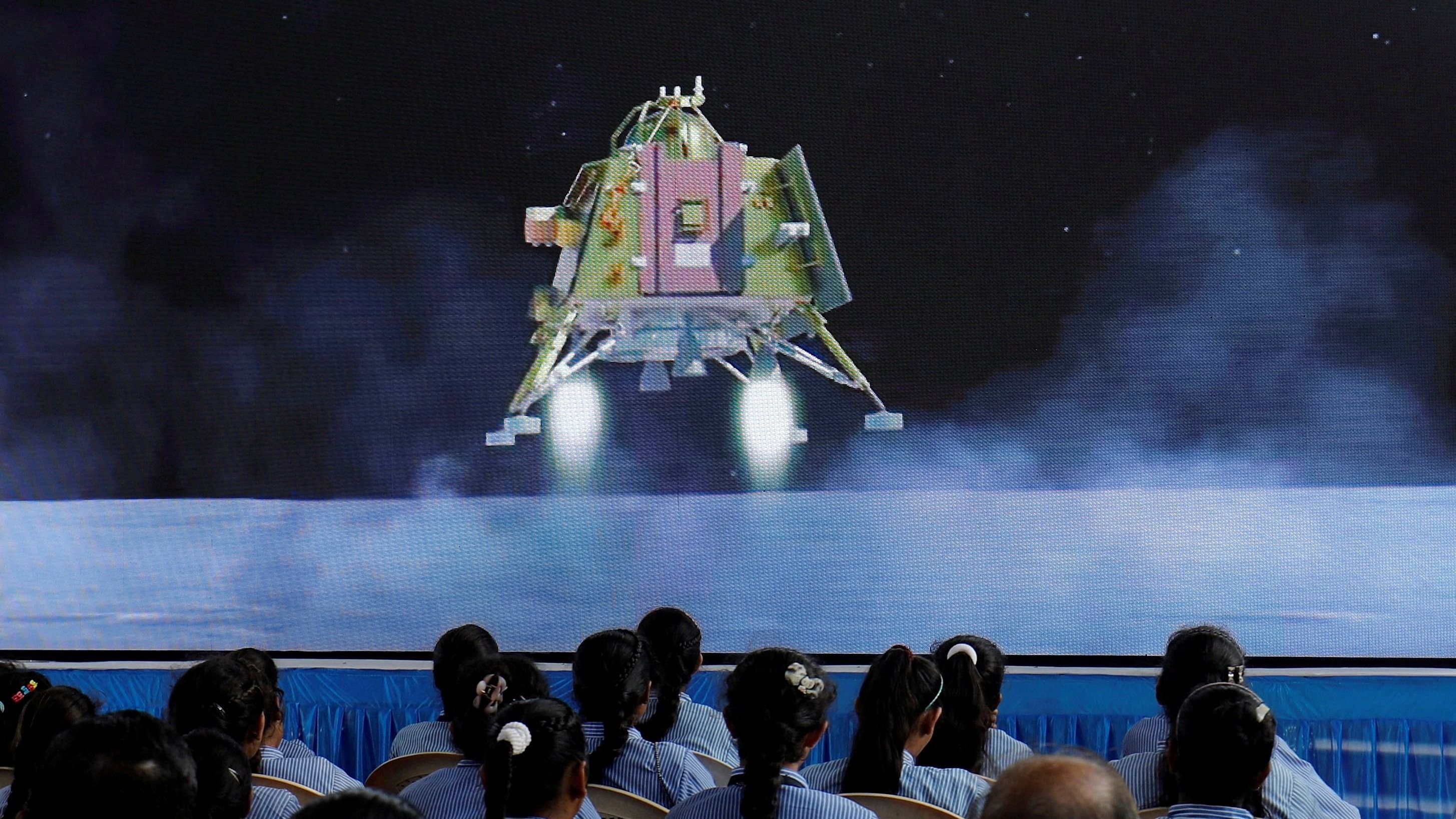
Visuals of Chandrayaan-3 spacecraft's landing on the moon.
Credit: Reuters File Photo
Bengaluru: As India celebrates the first National Space Day (NSD) on Friday, to commemorate the landing of Chandrayaan-3 near the Moon’s south pole, a young private space technology sector is betting on policy and emerging markets to further the country’s space power ambitions.
The first NSD comes with the theme ‘Touching Lives while Touching the Moon: India’s Space Saga’. Entrepreneurs and investors see the day as, at once, a milestone and a launchpad for important missions with private industry as a partner.
Awais Ahmed, Founder and CEO, Pixxel, called it a moment to reflect on how far we've come – from ISRO’s missions to the Moon and Mars to the rise of innovative space startups – and how much further we can go. With the government’s push for public-private collaboration and the opening up of space policies, India is well-positioned to capture a larger share of the global space market.
“Key thrust areas include launch vehicles, earth observation, satellite manufacturing, and space tech innovations that drive efficiencies across various sectors. Challenges such as raising funding, securing talent, scaling infrastructure, and navigating global competition remain, though these are surmountable as India's space ecosystem continues to mature,” he said.
Vishesh Rajaram, Managing Partner at seed-stage venture capital firm Speciale Invest, noted that the space sector was seeing a revolutionary shift, facilitating an environment of opportunity for startups who can help the government achieve its targets.
India aims to increase its share in the global space economy, from 2-3 per cent to 8 per cent by 2030 and 15 per cent by 2047. It has about 300 space startups; most of them emerged during the last couple of years.
Yashas Karanam, co-founder, Bellatrix Aerospace, said beyond the Chandrayaan-3 success, NSD was also about reflecting on ISRO’s achievements and the rapid innovations from private players competing at global markets. The target of 8-10 per cent of the global space economy is possible only by providing the best solutions for both upstream and downstream services by the private players, backed by govt policies and institutions.
“Compared to a decade back, space startups in India have grown by multitudes delivering competing solutions in in-space mobility, rocket launches, satellite manufacturing etc. This has to continue and grow exponentially to achieve a larger share of the global space economy,” he said.
India’s human spaceflight programme, Gaganyaan, is set for a 2025 launch. Plans are on to establish the Bharatiya Antariksh Station by 2035 and land an Indian on the moon by 2040.
The government, meanwhile, is partnering with industry in developing critical capabilities and technologies. Earlier this week, ISRO Chairman S Somanath confirmed that more than 10 companies and consortia expressed interest in manufacturing the Small Satellite Launch Vehicle on a technology-transfer model.
US-based Space Exploration and Research Agency (SERA) said the success of Chandrayaan-3 marked India’s ascent from “a participant to a frontrunner” in global space endeavours. Recent favourable policy decisions and the opening up of Foreign Direct Investment have positioned India as a destination of choice for investments in space technology, especially by the private space sector, Sam Hutchison, co-founder, SERA, said.
Suyash Singh, co-founder and CEO, GalaxEye Space, said programmes like NSD were important in inspiring the next generation of space enthusiasts and leveraging abilities to become a larger player in the global economy.